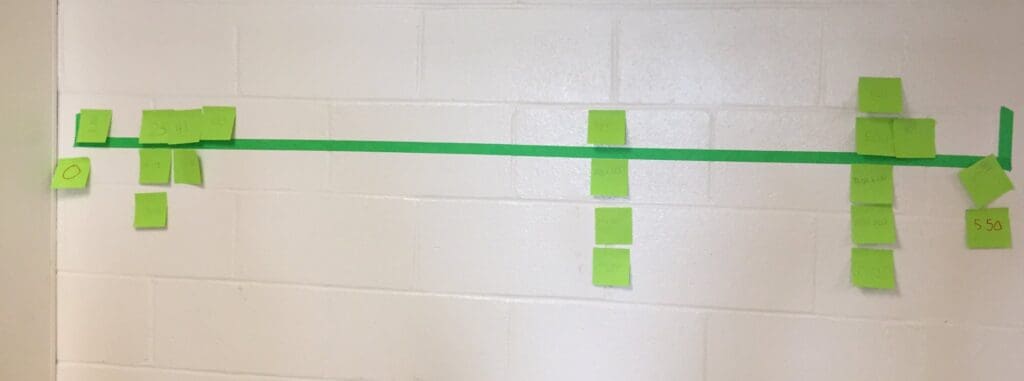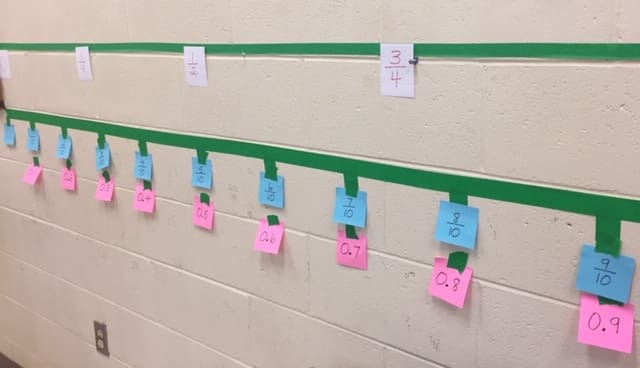Number lines have tremendous value, both in terms of instruction and learning. When considering instruction, number lines can be used to illustrate magnitude of numbers and used to compare numbers, whether it is whole numbers, decimals or fractions. The teacher can pose questions to illicit student thinking on the following:
- Ordering numbers
- Comparing numbers
- Using benchmarks
In terms of student learning, numbers lines can be used by students to model a situation and to solve problems. Number lines are one of many tools that students can apply to frame their understanding, work through a problem and consolidate their thinking. I have seen number lines used by students to:
- Solve addition and subtraction questions
- Demonstrate their thinking when comparing numbers
- Assist when counting objects
However, I want to suggest that we may be only scratching the surface in terms of the impact number lines could have on instruction and learning.
Traditional number lines, focused, for example, on addition, subtraction, word problems, integers, or comparing and ordering numbers, are used at all grade levels and help students understand the relationships between numbers. Similar to traditional number lines, classroom number lines help students understand numbers that come before and after other certain numbers and use benchmark numbers to support this understanding. When using such number lines, teachers should arrange the number lines both horizontally and vertically on occasion. Both ways of presenting an interactive number line promote flexibility of thinking so that students do not get used to seeing a number line in a particular way.Classroom number lines can be tweaked so that students can go back to these day after day. For example,teachers can adjust the range of numbers, use different benchmarks,and incorporate fractions, decimals,addition, and subtraction as number representations.
The example below highlights a classroom number line that had students write a whole number on a piece of paper and then place it on top of the number line. After this, students were asked to select a different number and write an addition sentence for it. They would then place this paper below the appropriate whole number. What this did was provide a visual of whole numbers and one of their corresponding addition sentences. Students could, then, not only compare whole numbers but they could compare the differences in the addition sentences. This promoted a deeper discussion of comparing numbers and comparing addition sentences in terms of greater than and less than. This approach to number lines could be applied to decimal numbers and fractions.

An additional benefit of a classroom number line is the ability to relate differing representations of number, such as fractions and decimals. The example below was taken from a Grade 4 classroom. The white pieces of paper are benchmark fractions that were assigned by the teacher. The blue and pink pieces of paper were placed by the students. Such an interactive number line supports the use of benchmark fractions, ordering fractions, ordering decimals, and relating fractions to decimals.

I would love for readers to post a comment sharing things they would like to see explored in this blog. Another option is to email me at da***@**********th.com
Adapted from
Costello, D. (2019). Using What Works: Strategies for Developing a Literacy-Rich Environment in Math.
